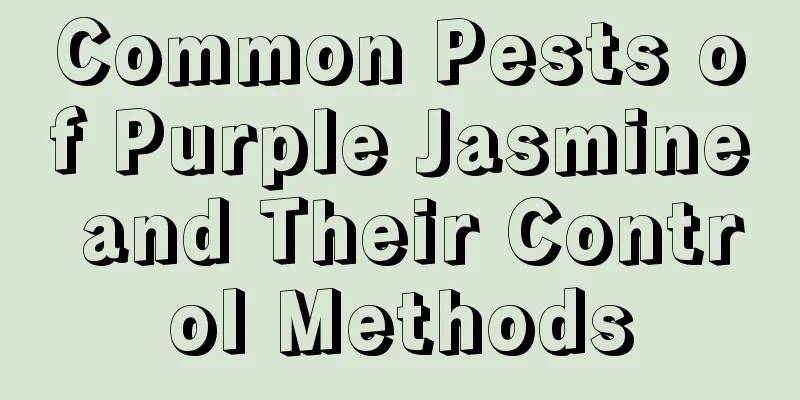Common Pests of Purple Jasmine and Their Control Methods

Common pests of purple lilies: aphidsPest symptomsAphids, also known as honey bugs and sticky insects, mostly belong to the Aphididae family of the order Homoptera. They are pests with piercing-sucking mouthparts. They often gather on leaves, tender stems, flower buds, terminal buds and other parts, sucking sap, causing the leaves to shrink, curl, and become deformed. In severe cases, they cause the branches and leaves to wither or even the death of the entire plant. The honeydew secreted by aphids can also induce sooty mold disease, viral diseases and attract damage from ants. Aphid control methodsKill aphids with laundry detergent: Laundry detergent has a contact killing effect on aphids. Use a brush dipped in a 1:500 ratio solution of laundry detergent and water to scrub the aphids on the branches and leaves of flowers. You can also use a small sprayer to spray it, which can also effectively scrub off the honeydew secreted by aphids. Regardless of whether you use laundry detergent or other pesticides to kill aphids, you must be careful that if you want to pick purple flowers for consumption in the future, you must wash them several times to ensure that there is no residue of the pesticide before eating them. Otherwise, you will spit out detergent bubbles when you speak, and your stomach and intestines will be attacked by the chemicals. Common pests of purple lilies: leafhoppersPest symptomsNymphs or adults use their mouths to suck sap, causing pale white spots to appear on the leaves. When the damage is serious, the spots appear in patchy shapes, or they may pierce the epidermis, causing the branches and leaves to wither. The harm caused by leafhoppers is not only superficial. They also often spread plant viruses, such as inducing purple lily mosaic disease and purple lily spot disease, which are very annoying. There are many types of leafhoppers. Flower lovers should pay more attention to observation during daily maintenance. After discovering the insects, they should lure and kill them to prevent their reproduction in time. Prevention and treatment methodsSpray 2000 times of 2.5% cypermethrin wettable powder, or 800 times of 90% trichlorfon solution, or 1000 times of 50% cypermethrin emulsifiable concentrate. |
<<: Pests and control methods of Eustoma
>>: Common pests of white clover and their control methods
Recommend
The efficacy and function of garlic orchid
1. The ornamental value of the garlic orchid This...
How long does it take to ferment rice water for watering flowers? How to ferment it so that it doesn't smell bad?
1. How long does it take to ferment? It doesn’t t...
How to care for Jinping Pinus truncatula in winter
Is the vine afraid of freezing? The suitable temp...
Reasons and solutions for water lily not blooming
The beauty of water lilies is very unique, and th...
Where is the gourd suitable for growing?
Gourd growth habits The gourd is a plant belongin...
The Flower Language of Wild Rose
Legends Before introducing the flower language of...
When is the best time to divide orchids?
When is the best time to divide the plants? Becau...
The top ten most beautiful plants that tolerate shade, and the ten best potted plants for indoor cultivation
1. Gloxinia Gloxinia is a very shade-loving flowe...
How to graft cherry blossoms
Grafting time The time for cherry blossom graftin...
The sweetest and stickiest glutinous corn seeds ranking list. How many kinds of super sweet glutinous corn seeds are there?
Which corn seeds are the sweetest and most sticky...
How to trim kumquat potted plants to look good
When is the right time to prune kumquat potted pl...
When is the best time to repot a succulent plant? Which month is the best time to repot?
Time to repot succulent plants The succulent plan...
How to make Chinese cabbage grow core quickly (how to make small cabbage grow core quickly)
Cabbage is one of the indispensable vegetables in...
What to do if you water too much coconut water
Too much water on the rich coconut Judgment : If ...
Cultivation methods and precautions of Banyan tree
1. Soil Generally, soil with good drainage does n...









